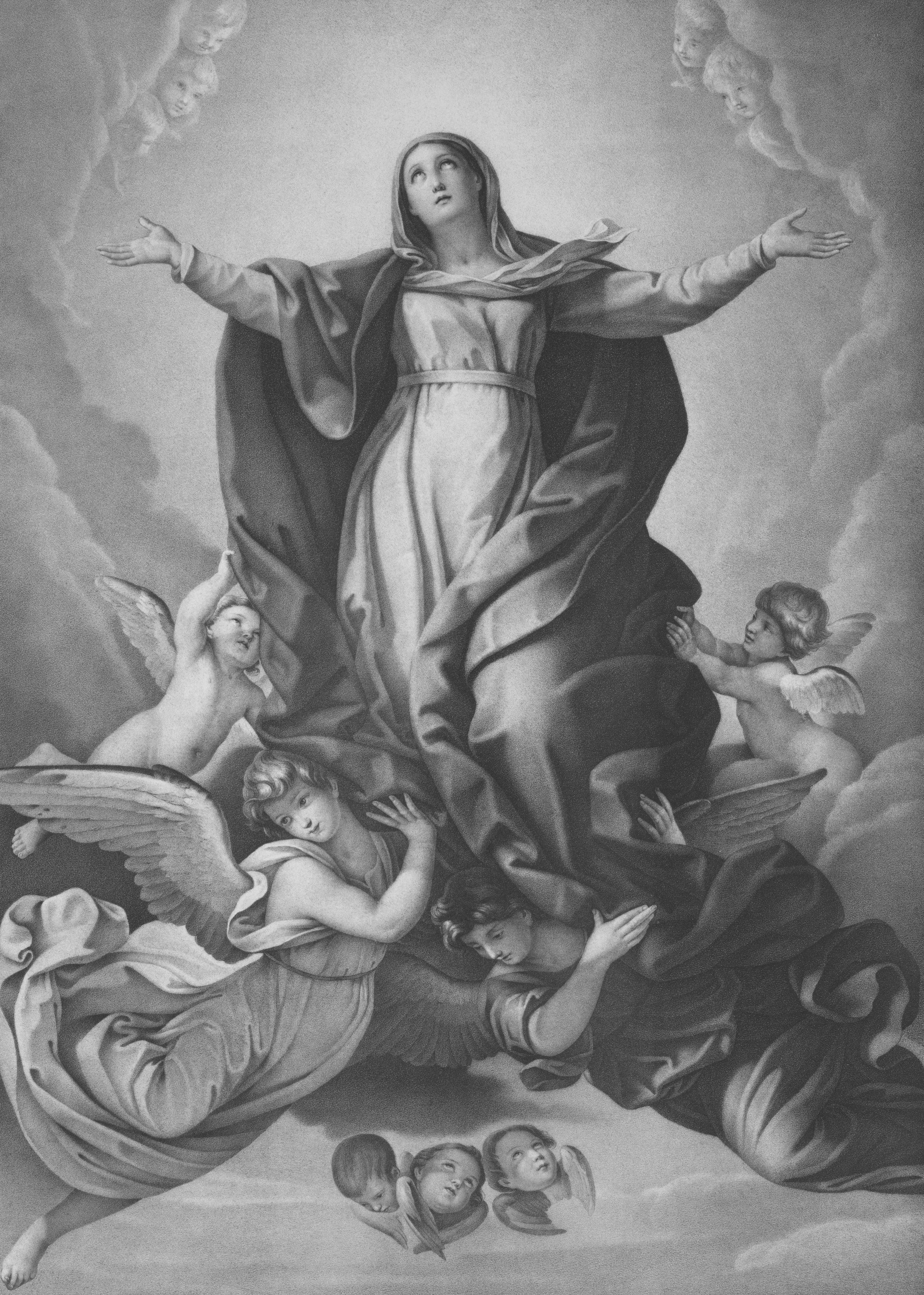Deacon’s Corner
On August 15, we are celebrating the feast of Mary’s assumption into heaven. But while the feast day is a relatively new one, the history of the holiday — and the mystery behind it — has its roots in the earliest centuries of Christian belief.
The Catholic Church teaches that when Mary’s earthly life ended, God assumed her, body and soul, into heaven.
The dogma of the Assumption of Mary — also called the “Dormition of Mary” in the Eastern Churches — has its roots in the early centuries of the Church.
While a site outside of Jerusalem was recognized as the tomb of Mary, the earliest Christians maintained that “no one was there.”
According to St. John of Damascus, the Roman emperor Marcian requested the body of Mary, Mother of God, at the Council of Chalcedon in 451.
St. Juvenal, Bishop of Jerusalem, told the emperor that “Mary died in the presence of all the Apostles but that her tomb, when opened upon the request of St. Thomas, was found empty. The Apostles concluded that Mary’s body was taken up to heaven,” the Saint recorded.
By the eighth century, around the time of Pope Adrian, the Church began to change its terminology, renaming the feast day of the Memorial of Mary to the Assumption of Mary.
The belief in the assumption of Mary was a widely-held tradition and a frequent meditation in the writings of saints throughout the centuries. However, it was not defined officially until the past century.
In 1950, Pope Pius XII made an infallible, “ex cathedra” statement in the apostolic constitution Munificentissimus Deus officially defining the dogma of the Assumption…
“By the authority of Our Lord Jesus Christ, of the Blessed Apostles Peter and Paul, and by our own authority, we pronounce, declare, and define it to be a divinely revealed dogma: that the Immaculate Mother of God, the ever Virgin Mary, having completed the course of her earthly life, was assumed body and soul into heavenly glory,” the pope wrote.
The decree was seen as the formalizing of long-held Christian teaching.
Evidence of Mary’s assumption runs throughout the whole of the history of the Church in support of this dogma. This is significant because it not only supports the tradition of the Church, but it also supports a coming to a deeper understanding of the teachings of the Church of how we rely upon the reflections of some of the greatest minds of our Church.
What is also notable about the dogma, is that it “uses the passive tense,” emphasizing that Mary did not ascend into heaven on her own power, as Christ did, but was raised into heaven by God’s grace.
Today, the Solemnity of the Assumption is marked as a major feast day and is a public holiday in many countries. In most countries, including the United States, it is a holy day of obligation.
So, what are some ways that we can celebrate this special feast day?
Attend Mass - We go to Mass to show our love and affection for Our Blessed Mother and by doing so we bring glory to her Son.
Take part in a procession
Plant a Mary Garden – Denise and I have a “Mary Garden” in the back corner of our yard. We have a beautiful statue of our Blessed Mother surrounded by flowers and shrubbery. For us, it’s a way that we can honor her.
Pray the Rosary – I especially recommend on this Feast Day to pray a “Scriptural Rosary” and focus on the Glorious Mysteries. There are many resources for praying Scriptural Rosaries on-line or check out our Blessings Gift Shop. You may also join me at 7:30 a.m. prior to Mass.
Eat - Oh, how we love to have something special to eat for a feast day! Your plans can be as simple as a picnic or cookout or as fancy as a formal sit-down dinner with family or friends.
A prayer for the Feast:
All powerful and ever-living God: You raised the sinless Virgin Mary, mother of your Son, body and soul, to the glory of heaven. May we see heaven as our final goal and come to share her glory. Amen.
Blessings,
Dcn. Mike

